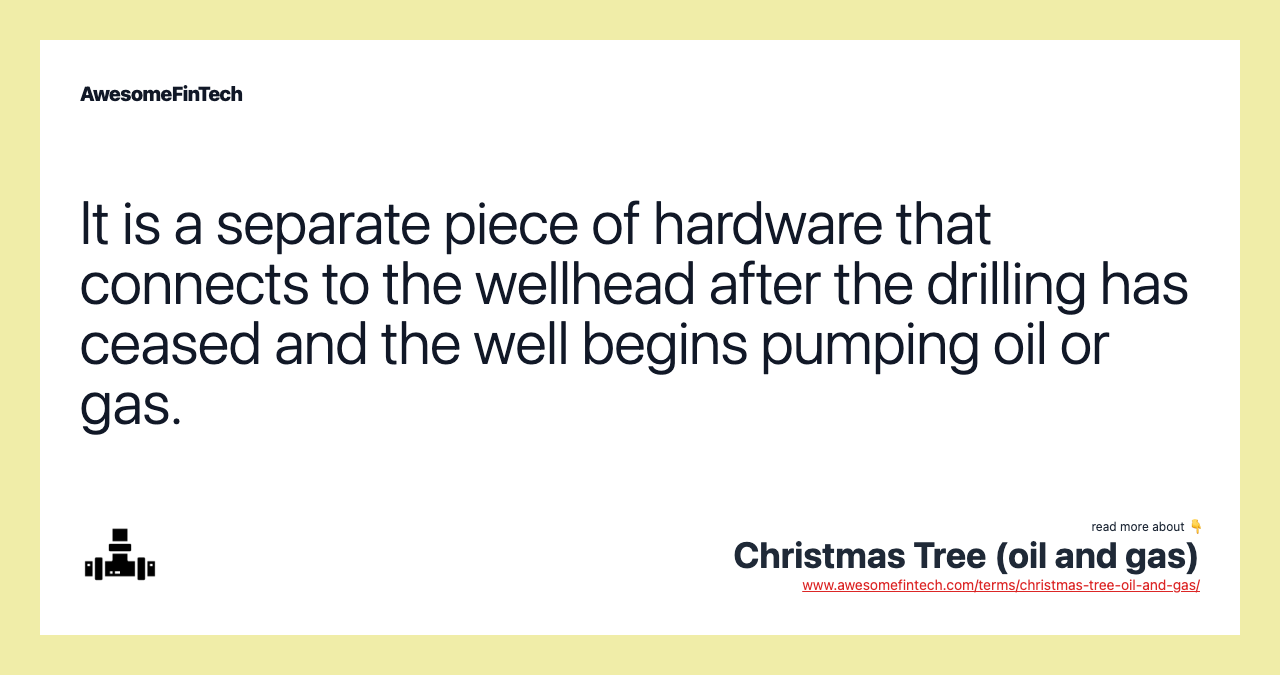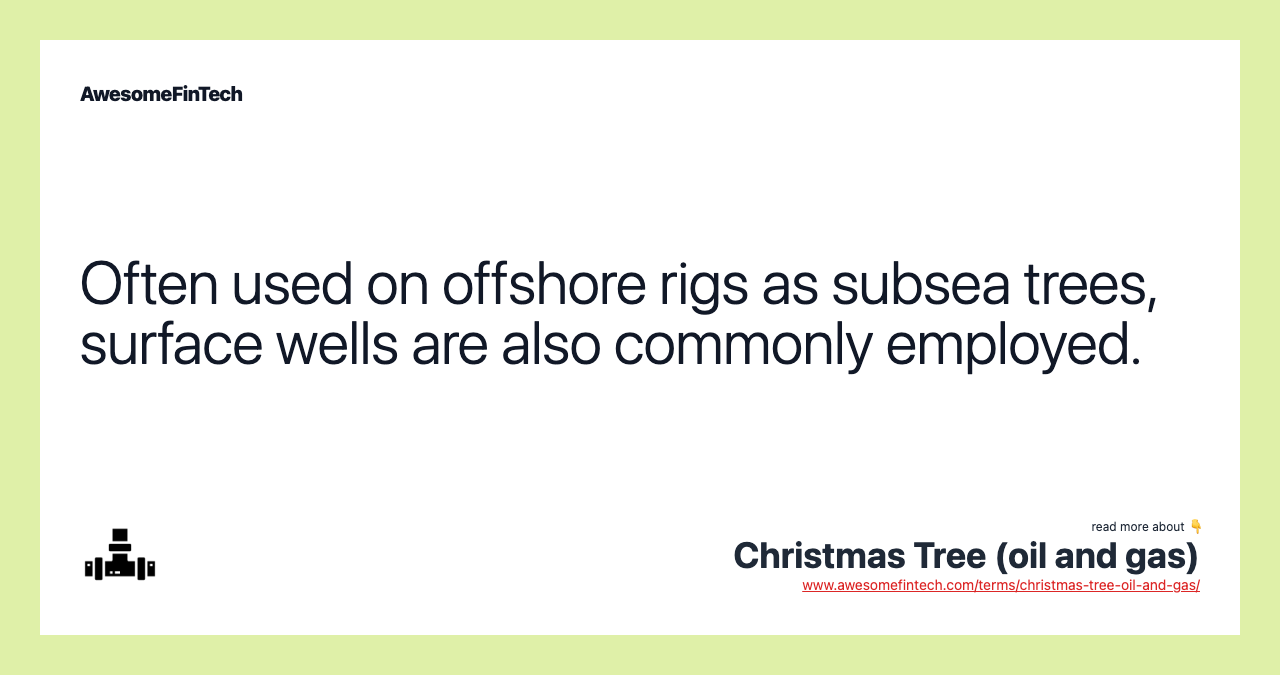Christmas Tree (oil and gas)
A Christmas tree is a piece of equipment that provides flow control on a oil or gas well. Christmas trees are used in oil exploration and production in surface and underwater oil and gas wells. A Christmas tree is a piece of equipment that provides flow control on a oil or gas well. In the oil & gas industry, a Christmas tree is a piece of heavy equipment that controls the flow produced by a well. The valves that comprise some of the decorations on the Christmas tree are opened when the oil or gas well is ready to produce and the processing and storage facilities are ready to receive.

What Is a Christmas Tree (oil and gas)?
A Christmas tree is a piece of equipment that provides flow control on a oil or gas well. Christmas trees are a vertical assembly of valves with gauges and chokes that allow for adjustments in flow control as well as injections to stimulate production. Christmas trees are so-called because the collection of components can resemble a Christmas tree if you have the right amount of imagination. The valves that comprise some of the decorations on the Christmas tree are opened when the oil or gas well is ready to produce and the processing and storage facilities are ready to receive. The other decorations are devices that facilitate pressure relief, monitoring and chemical injection.



How Christmas Trees Work
Christmas trees are used in oil exploration and production in surface and underwater oil and gas wells. Christmas trees on surface wells are also known as surface trees, as they connect to the wellhead that is visible on the surface of a well.
Christmas trees used in offshore drilling and extraction are called subsea trees. Subsea trees can be vertical or horizontal based on how the master valves – the valves set on the flow path and capable of closing off production – are designed. Subsea trees have even less of a resemblance to a Christmas tree, but the name persists out of tradition.
The Wellhead Versus the Christmas Tree
The Christmas tree is sometimes confused for the wellhead of an oil well. The Christmas tree sits atop the wellhead, but it is a separate piece of equipment. There is no Christmas tree on the wellhead during drilling operations. Instead a blowout prevention device sits atop the wellhead as the well is drilled and casing/tubing strings are inserted. When the well is moved to production, the Christmas tree is affixed for flow control. So the wellhead is present from the start whereas the Christmas tree is an additional piece of equipment that comes into play when the well moves from drilling to production.
Technical Terms
For most investors, knowing the definition of a Christmas tree will not change their approach to oil and gas companies. Investors mainly focus on universal company metrics like return on invested capital (ROIC) and earnings before depreciation, interest, taxes and amortization (EBITA). Beyond this, oil and gas investors can quickly master concepts like proven and probable reserves and net acres.
So there is questionable value in consuming too much of the technical information around oil and gas production. That said, for investors that want to specialize in oil and gas investing, mastering the vocabulary is part of the process as most of the information is highly technical once you move beyond the basic public filings.
Related terms:
Commercial Well
An oil or gas drilling site that produces enough oil to be commercially viable is called a commercial well. read more
Crude Oil & Investing Examples
Crude oil is a naturally occurring, unrefined petroleum product composed of hydrocarbon deposits and other organic materials. read more
What is EBITDA - Formula, Calculation, and Use Cases
EBITDA, or earnings before interest, taxes, depreciation, and amortization, is a measure of a company's overall financial performance. read more
Horizontal Well
A horizontal well is an oil or gas well that is dug at an angle of at least eighty degrees to a vertical bore. read more
Net Acres
Net acres represent an oil company's ownership stake in shared projects in addition to acres leased directly by the company for exploration and production. read more
Oil Sands
Oil sands are found in parts of Canada, Venezuela, Kazakhstan, and Russia, and produce a thick form of crude oil that can be extracted from the earth. read more
Primary Recovery
Primary recovery is the first stage in extracting oil and gas. In crude oil production, various methods of primary recovery can be used. read more
Probable Reserves
Probable reserves are oil and gas resources determined to have between a 50 and 89 percent likelihood of commercial recovery. read more
Return on Invested Capital (ROIC)
Return on invested capital (ROIC) is a way to assess a company's efficiency at allocating the capital under its control to profitable investments. read more